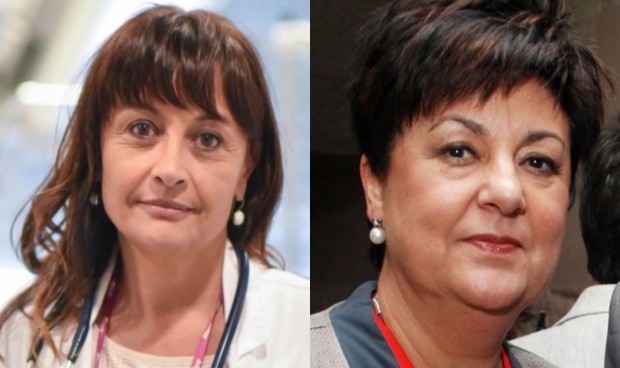
Maria Cruz Martín and María José Otero.
the article ‘Evaluation of the implementation of safe practices with drugs in Intensive Care Services’, Published in the latest issue of the magazine Intensive Care Medicine, Is the first document signed jointly by intensivists and hospital pharmacists that advocates the incorporation of barcodes in medicines, The generalization of the electronic prescription integrated and the incorporation of pharmacist specializing in ICUs to reduce medication errors, adverse events, and mortality.
the data collection, which began in March 2020, was very well received despite the situation arising from the pandemic by Covid-19, which highlighted the interest of health professionals in both specialties in improving safety .
By Maria Cruz Martín, Head of the Intensive Care Unit of the University Hospital of Torrejón and responsible for the study by the Spanish Society of Intensive Care Medicine, Critical Care and Coronary Units (Semicyuc), “The information provided by this study will be very useful for planning improvement actions in areas that may be of greater interest to work together for the SEFH and Semicyuc, in order to make effective progress in the critical patient safety”.
The study was carried out as a result of an agreement signed between the two companies in which it was established as a priority line of collaboration to work together in the improving medication safety in critically ill patients, Since these patients have a very high risk of suffering preventable adverse events per medicines. These activities are in line with the strategic objectives of the World Health Organization’s Global Patient Safety Action Plan 2021-2030.
Analysis procedure
First, a questionnaire was developed for the Intensive Care Services to evaluate the medication safety, With the participation of the ISMP-Spain and the support of the Ministry of Health. In this way, the services of Intensive Care had one specific tool for continuous improvement that would help them analyze the safety of their practices with medication and identify what their critical points of risk and opportunities for improvement were. Next, it was proposed to carry out this study to know the situation of the safety of the process of use of medicines in the Intensive Care Services at the national level, in which they participated. 40 services nationwide.
Results and future perspective
The work has shown that there are numerous possibilities for improvement that need to be addressed to reduce the preventable adverse events for medication in critically ill patients. Although differences were observed in the degree of implementation of various practices between services, the information gathered has revealed that there are also numerous effective safe practices of proven effectiveness the implementation is low or very low in our country.
According to María José Otero, head of the Pharmacy service at the University Hospital of Salamanca, director of the ISMP-Spain and coordinator of the study by the SEFH: “These practices include the incorporation of new technologies, Particularly the barcode in administration, The incorporation is anecdotal, but also the availability of systems integrated electronic prescription and clinical decision support systems, or intelligent infusion pumps, which is clearly insufficient. The data indicate that the incorporation of the clinical pharmacist into multidisciplinary intensive care teams is very low, when the evidence supports that this reduces errors, adverse events and mortality. “
The authors of the article emphasize that, according to their experience, “with this type of studies that are based on the use of self-assessment tools, We believe that carrying out the study has promoted the use of the questionnaire and, with this, that professionals review their processes and discuss the safe practices of drug use in their services“Which ultimately encourages them to take improvement measures in the centers.”
Although it may contain statements, data or notes from institutions or health professionals, the information contained in Redacción Médica is edited and prepared by journalists. We recommend to the reader that any questions related to health be consulted with a health professional.